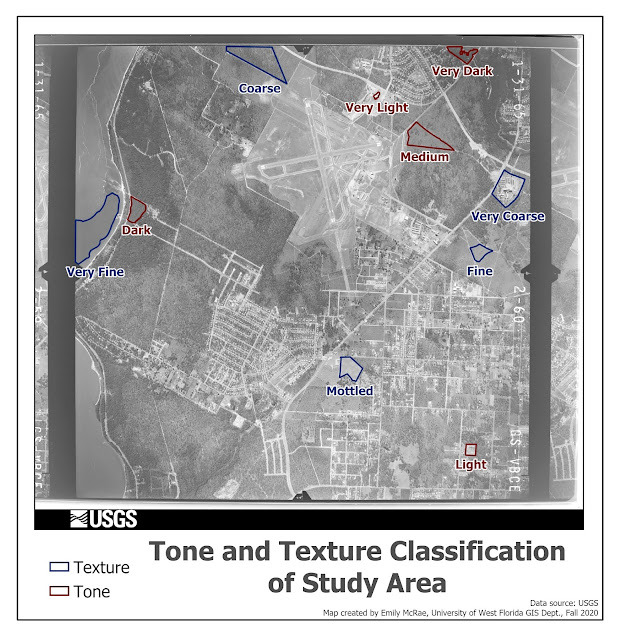GIS 4035 - Module 1 - Visual Interpretation

This map demonstrates, through a grey scale aerial image, how one can classify features on a landscape visually using tone and texture. Tone being the scale of lightness to darkness and texture being a scale of very coarse to very fine. These classifications were done by eye, and may be subjective to the analysts interpretation, as well as the images clarity, scale, and resolution. This map identifies features in a greyscale aerial photo by 4 means: pattern (Objects/places were chosen that are clearly visible and interpretable as they are part of a larger repeating pattern, but that had they been presented in isolation or at a very large scale, would not be clear as to what they are), shadows (Objects were chosen which could not have been identified had they not been casting a shadow which revealed information about what the object is), association (Objects were chosen that could not be identified without looking at the surrounding environment and making logical connections about what ...

